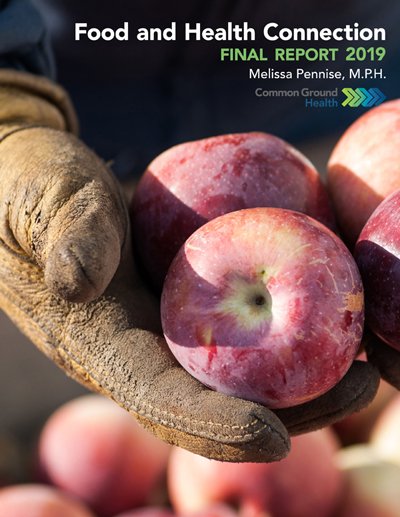By Robin L. Flanigan
Most adults in the Finger Lakes region do not eat enough fruits and vegetables, and that tendency is harming their health, according to a new study of the area’s food and health landscape.
Only 1 in 10 adults in the nine-county Finger Lakes region eats the recommended daily amount of fruits, and 1 in 5 adults reports not eating any fruits or vegetable at all on a daily basis, according to the study, Food and Health Connection.
“When those statistics came back, I said, ‘This can’t be right. Is this right?’” recalls Melissa Pennise, M.P.H., associate director of strategic initiatives for Common Ground Health and author of the report.
The numbers were accurate, which is unfortunate, given the vital link between healthy food access and health outcomes.
The report is the culmination of a two-year study involving Common Ground Health, Foodlink and the S2AY Rural Health Network. Researchers used public health surveys, interviews, local and state data, and other sources to better understand what keeps people from putting fruits and vegetables on their plates.
Analysts paid special attention to populations disproportionately affected by diet-related chronic disease. For instance, blacks and Hispanics experience higher rates of diabetes, hypertension and obesity. While these groups are more likely than whites to report that eating healthy is very important, the study found that blacks and Hispanics were less able to meet their dietary goals.
People at all income levels said the top barrier to healthy eating is cost, particularly for those in rural and urban areas. In fact, 20% of residents making more than $75,000 a year said healthy food is too expensive.
The study also documented widespread food insecurity, defined by the U.S. Department of Agriculture as not having access at all times to enough food for an active, healthy lifestyle.
Food insecurity rates in Finger Lakes counties range from 9.2% in Livingston County to 12.8% in Chemung County. However, for children, the rate is much higher—greater than 16% for all counties and up to 20.9% in Steuben County.
Transportation emerged as a significant barrier to improving farm-to-school programs, says Cornell Cooperative Extension Wayne County Executive Director and Agricultural Issue Leader Elizabeth A. Claypoole, who was a member of the Food and Health Connection steering committee.
Farm-to-school programs encourage schools to buy local foods and offer educational opportunities related to food, nutrition or agriculture. But the report documents that it is difficult to get products from farms to schools at a cost reasonable to both farmers and schools.
“Farmers are altruistic, but they can’t spend all day running around to schools to deliver one flat of tomatoes,” Claypoole says.
Getting farms, schools, food distributors and others to better understand each other’s requirements is key to improving access, Pennise said.
Interest is high for building networks and identifying brokers between local farms and schools—89% of farmers surveyed would like help being connected to school districts, and 68% of school food service directors would like help connecting farmers to food distributors they’re currently using. And 72% of farmers would make investments to grow more fruits and vegetables if schools were committed to purchasing.
According to the report, a network would promote a mutual understanding of availability and purchasing processes.
The Food and Health Connection report highlights more than half a dozen innovative programs around the region that are improving residents’ access to vegetables and fruits, including a mobile produce shop and a farmers market for kids.
Nutrition classes targeted to people with specific needs, such as chronic disease management, go a long way toward helping people incorporate fresh produce into their regular diets, Pennise says. These classes allow participants with similar barriers to learn together and from each other, sometimes creating new community champions in the process. Experiential components like cooking lessons and incentives to buy fresh produce help to support the learning process.
“The ‘You should eat healthier’ message can come from an authority figure,” says Pennise, “but we’ve heard from patients and doctors that people learn more when they learn from each other.”
Easier access to affordable quality produce will require more creative solutions from the community, programs and government agencies, the report says.
How? “That’s a question we’ve been struggling with,” says Claypoole. “It’s not just about one person going to a workshop on developing healthy behaviors. It’s going to take a combined effort.”


